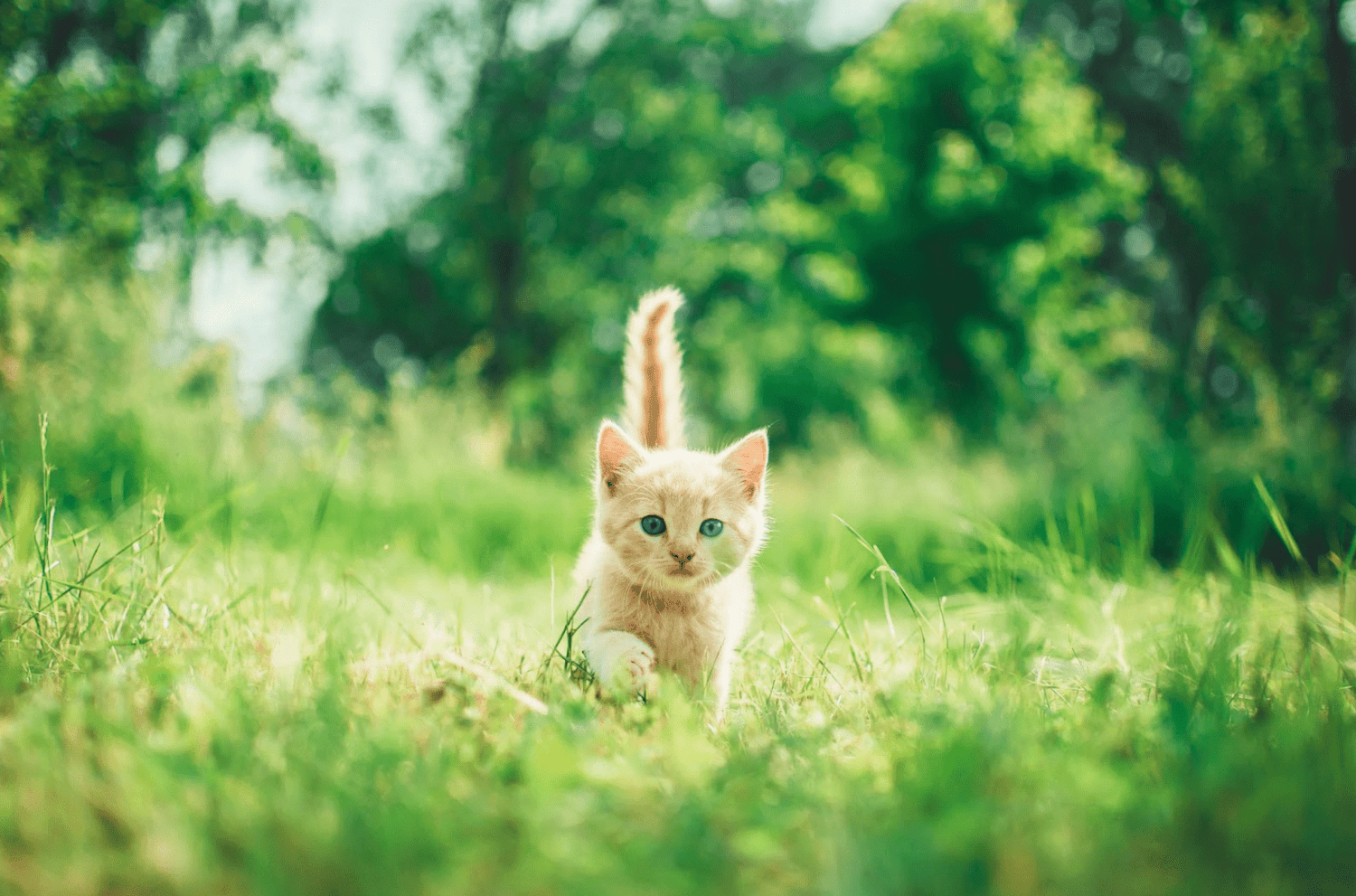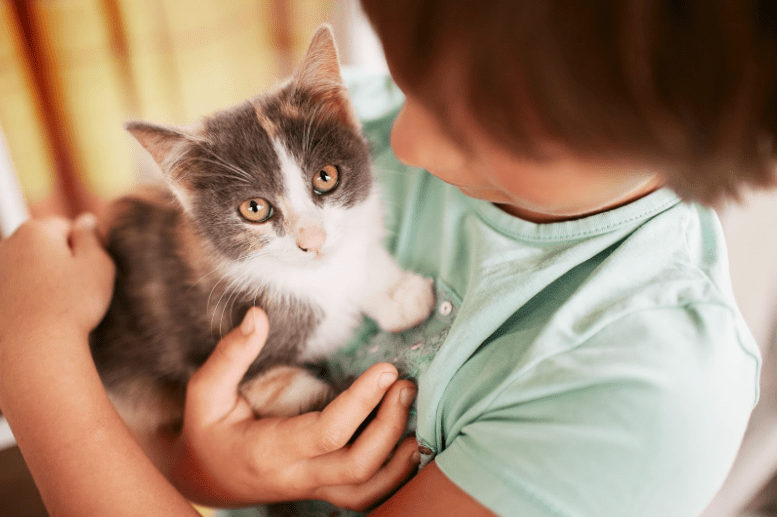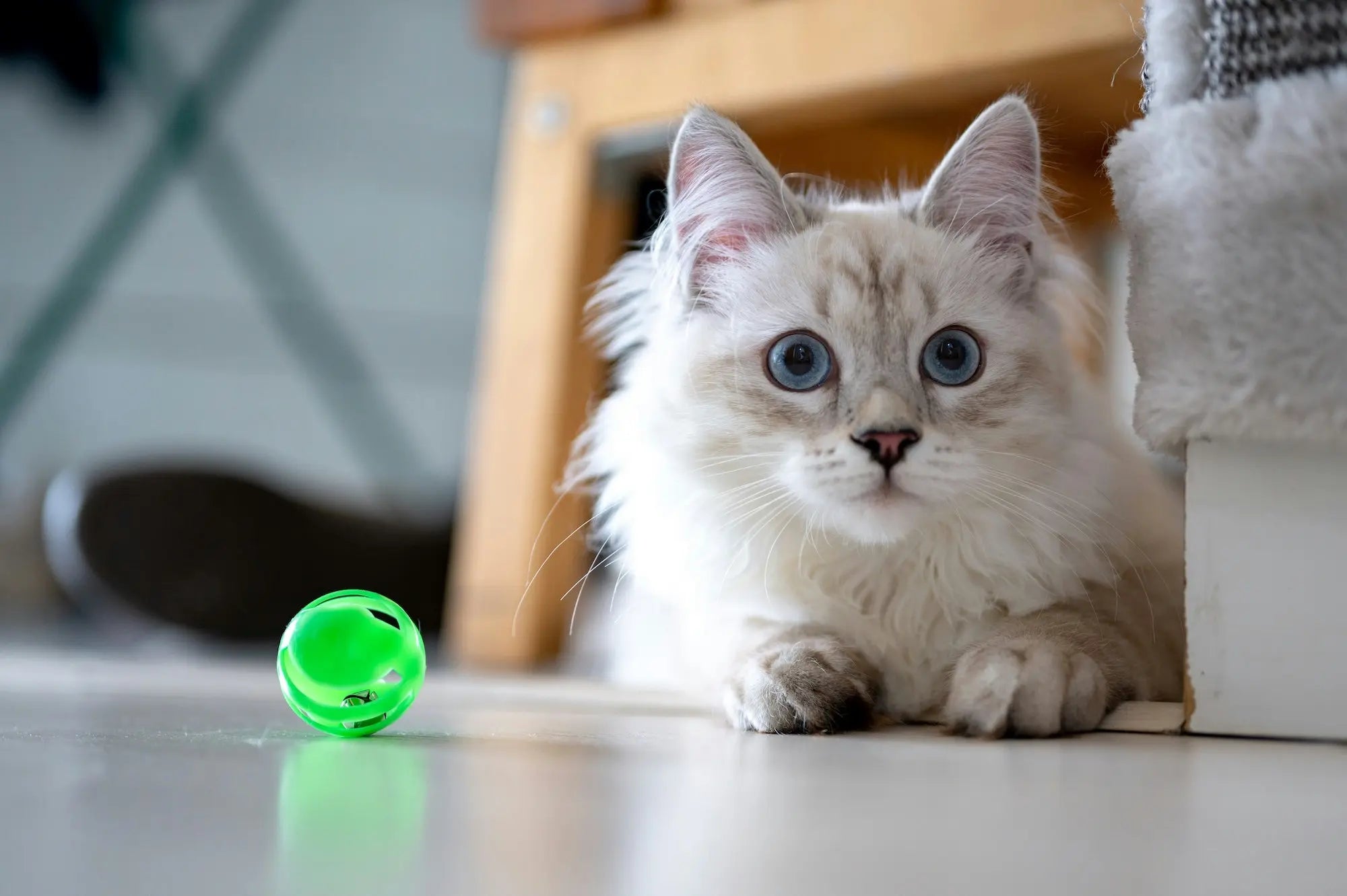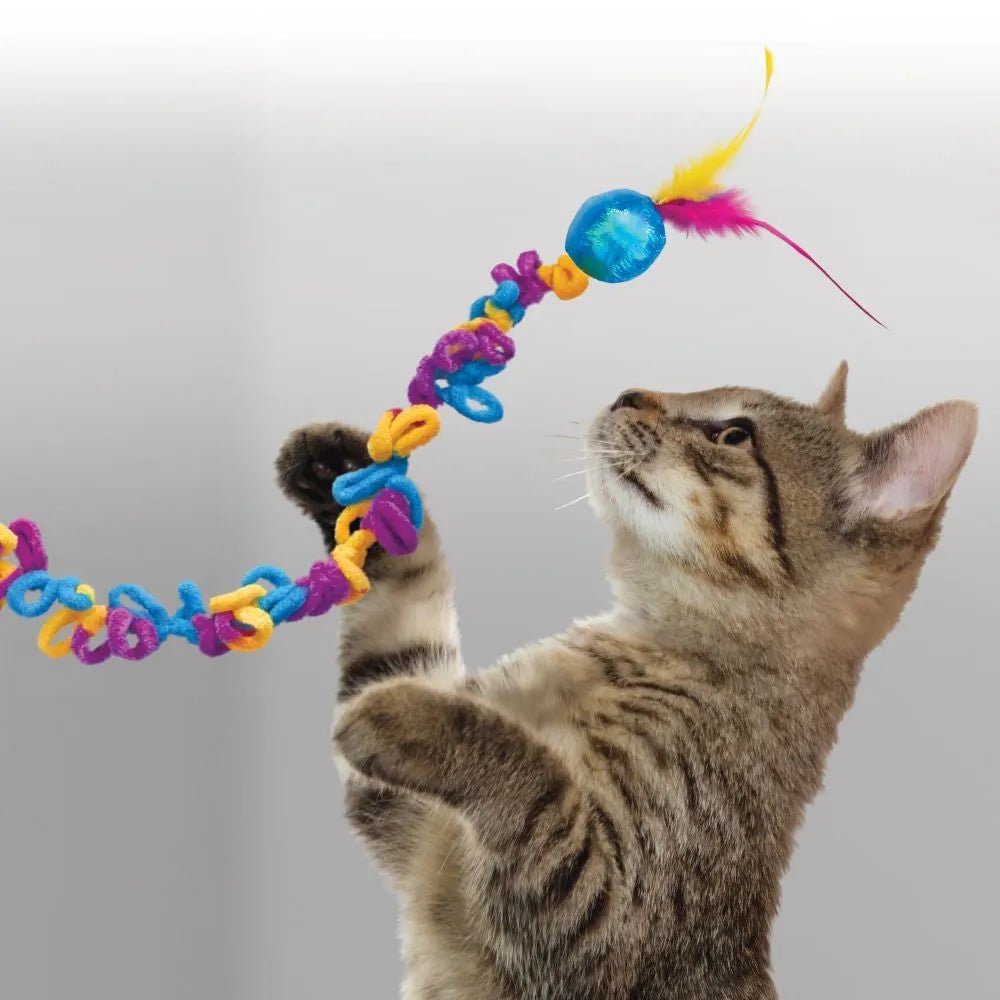Are you wondering how to tell the gender of kittens? If your cat has just given birth to her first litter, it can be exciting to identify the gender of the kittens. Maybe you named the little furball Petter when it should have been Petra? It can be difficult to tell the difference between a male and a female cat, so it often helps to compare the kitten to its siblings. Let's take a closer look at the visual characteristics and methods we can use to assess the gender of kittens !
How to tell the gender of kittens?
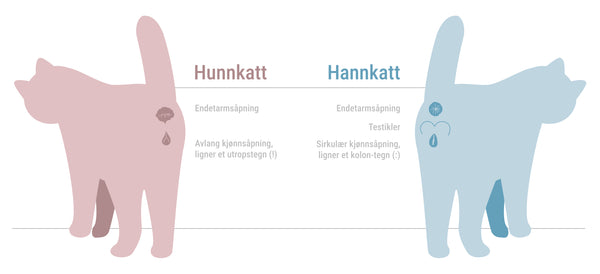
Visual characteristics of female cats
- The distance between the anus and the genital opening is closer in female cats than in male cats.
- The area in the middle is hairless, but may become covered with fur when they are around 5 weeks old.
- The openings look more like an upside-down exclamation mark (!), as the genital opening of the female is more elongated.
Visual characteristics of male cats
- The distance between the anus and the genital opening is greatest in male cats.
- The area between the openings is covered in fur. As a rule of thumb, you can think that there should be room for one more opening in the middle in males.
- The openings resemble a colon (:), as the genital opening of the male is more circular.
- When the kitten is around 8–9 weeks old, we can often see the testicles as small balls between the two openings in the abdomen. However, some male cats may be born with cryptorchidism, which makes it difficult to see the testicles, as they do not descend into the scrotum.
- Even if there are multiple nipples on the kitten, it could still be a male cat!
See everything a kitten needs .
When is it easiest to sex kittens?
Although an experienced cat lover can sex kittens as early as 10 days after birth, it is much easier when they are around 8 weeks old. Since it is easier to assess the sex of kittens when they are older, you may want to wait a few weeks before sexing them. This way you also avoid unnecessarily stressing the mother cat by separating the kittens so early.
How to check the kitten's gender?
Start by finding a quiet place and choose a time when the kitten is more relaxed, such as after a meal . Maybe the mother can get some cat treats or an exciting cat toy to get her mind off things? Gently lift the little bundle up. Kittens get cold quickly without their mother, so make sure the room is warm. Lay the kitten on its back and lift its tail away to take a look. You can also have them stand on a non-slip surface and scratch their lower back a little so that the tail lifts up. The hole closest to the tail is the anal opening, while the other hole is the genital opening. What you should look for is the distance between the two openings and the shape of the genital opening furthest from the tail. A tip is to compare 2 and 2 cats at a time, then it is easier to see the differences.
Are you interested in getting a kitten and how much it costs? Read our blog post to find out !
The fur can be an indicator of whether the cat is a boy or a girl
Tortoiseshell female cats dominate
Yes, that's right! A quick and easy, but not always reliable way to tell if the cat in front of you is a boy or a girl, is actually to take a look at its fur. Do you have a feeling that tortoiseshell cats, that is, cats with the three colors orange, black and white, are female cats? Then you are right! Just like us humans, girls have two X chromosomes, while boys have one X and one Y chromosome. To be tortoiseshell, the kitten must have two X chromosomes. There are, of course, rare exceptions. 1 in 3,000 cats that have the three colors are male cats. They are born with two X chromosomes in addition to having a Y chromosome. Therefore, almost all tortoiseshell male cats are sterile.
Orange kittens are often male
When we see an orange cat, however, we almost instinctively think that this furry animal is a handsome male cat. This is because the genes for the orange coat color are also located on the X chromosome. Female cats must have two X chromosomes with the orange gene, while for male cats, only one X chromosome with the orange gene is enough. Orange female cats are not as rare as tortoiseshell male cats, as 1 in 5 orange cats is female.
To the untrained eye, it is not always certain that you have made the right decision when you have sexed your kitten. Ask your veterinarian in connection with the basic vaccinations, and you will get a quick answer. One thing is for sure – regardless of the sex, you will have an adorable feline friend!


